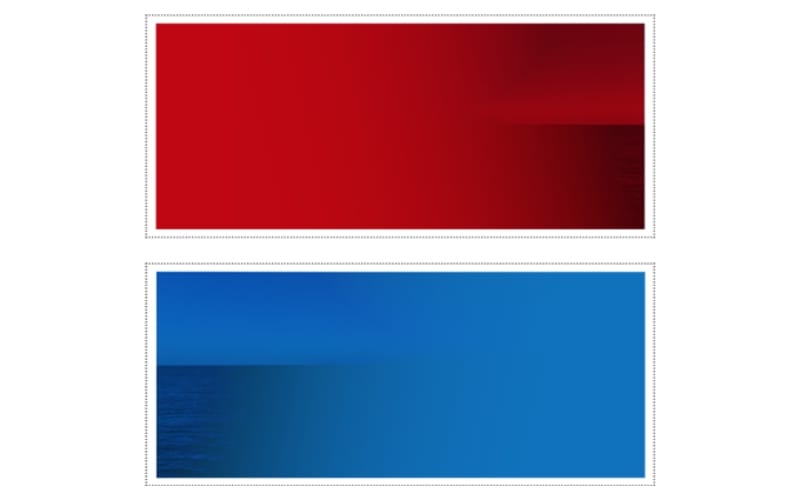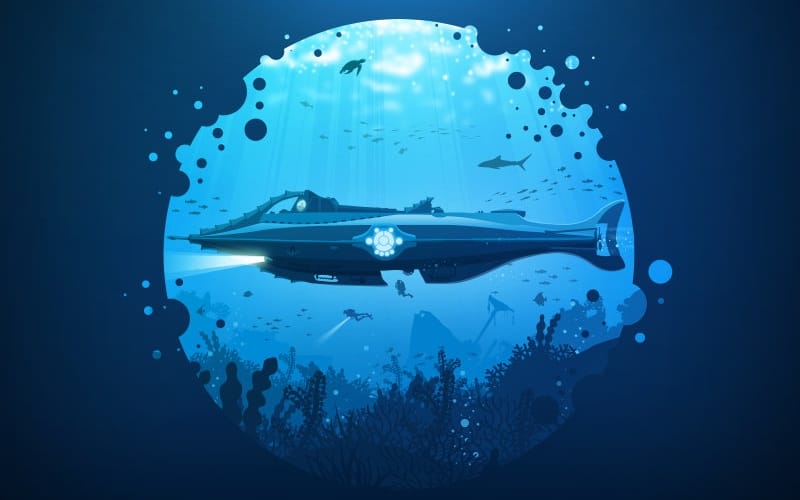
In 2005, Professors W. Chan Kim and Renee Mauborgne launched a revolution in business strategy by encouraging companies to evacuate shark infested waters.
Their book, “Blue Ocean Strategy: How to Create Uncontested Market Space and Make Competition Irrelevant.”
suggests companies are better off searching for ways to gain “uncontested market space” over competing with similar companies.
These new spaces are described as “Blue Oceans,” compared to the struggle for survival in bloody “Red Oceans” swarming with vicious competition. The Blue Ocean Strategy represents the simultaneous pursuit of high product differentiation and low cost, that way making contest irrelevant.
So, what is the blue ocean strategy?
Blue ocean strategy is the simultaneous pursuit of differentiation and low cost to open up a new market space and create new demand. It is about creating and capturing uncontested market space, that’s why making the competition irrelevant. It is based on the view that market boundaries and industry structure are not a given and can be reconstructed by the actions and beliefs of industry players.

In the classic book “Blue Ocean Strategy” Chan Kim & Renée Mauborgne coined the terms ’red ocean’ and ‘blue ocean’ to describe the market universe.
Red oceans are all the industries in existence today, the known market space. In red oceans, industry boundaries are defined and accepted, and the competitive rules of the game are known.
Companies try to outperform their rivals to grab a greater share of existing demand. As the market space gets crowded, profits and growth are reduced. Products become commodities, leading to cutthroat or ‘bloody’ competition. Hence the term red oceans.
Blue oceans, on the other hand, denote all the industries not in existence today, the unknown market space, untainted by competition. In blue oceans, demand is created rather than fought over. There is ample opportunity for growth that is both profitable and rapid.
In blue oceans, competition is irrelevant because the rules of the game are waiting to be set. A blue ocean is an analogy to describe the wider, deeper potential to be found in unexplored market space. A blue ocean is vast, deep, and powerful in terms of profitable growth.
Kim explained in an article on Forbes, “Our study shows that blue ocean strategy is particularly needed when supply exceeds demand in a market. This situation is applying to more and more industries today and will be even more prevalent in the future.”
Discovering Blue Oceans

While avoiding the use of Harvard Business School’s Michael E. Porter’s name, Kim and Mauborgne attack the famous “five forces” market analysis head on. Porter’s model looks at specific factors that help determine whether a business can be profitable based on other businesses in the industry.
Supporters of Kim and Mauborgne’s strategy would say this is a tactic that promotes merciless competition, remaining in the red waters.
The key to extraordinary business success, the authors say, is to redefine the terms of competition and move into the “blue ocean,” where you have the water to yourself. The goal of these strategies is not to beat the competition, but to make the competition irrelevant.
To discover the Blue Ocean, Kim and Mauborgne recommend that businesses consider what they call the Four Actions Framework to reconstruct buyer value elements in crafting a new value curve. The framework poses four key questions:

⦁ Raise: What factors should be raised well above the industry’s standard?
⦁ Reduce: What factors were a result of competing against other industries and can be reduced?
⦁ Eliminate: Which factors that the industry has long competed on should be eliminated?
⦁ Create: Which factors should be created that the industry has never offered?
These four keys forces companies to examine every factor of competition, guiding leaders to discover the assumptions they unconsciously make while competing. They can then search for blue oceans within their industries and make the shift.
Blue Ocean in practice

By:https://dribbble.com/shots/8909117-Vantage-point
Kim Said: “Just think of its initial blue ocean shift in book retailing that separated it from the pack with its offering of the largest selection of books in the world, good prices, automatic confirmation of buyers’ orders, its useful selection on ‘people who bought this book also bought,’ and first hand reviews on what readers found useful or not in a book.”
He Pointed out how Amazon has shifted from an online retailer to a digital platform that sells practically anything.
Amazon isn’t always successful in creating blue oceans, however. According to Mauborgne, it failed in a few instances against Zappos, eBay and Apple.
Mauborgne Added: “In each of these cases, the companies Amazon went up against had all created blue oceans of their own, and whenever Amazon tried to imitate them, they failed. The lesson here is that the best defines is offense, and the best offense … is to make a blue ocean shift and create your own blue ocean. Imitation is not the path to success, especially in the overcrowded industries most companies today confront.”
Another company that created a blue ocean shift is Home Depot, which made an original value-cost frontier that led to the multibillion-dollar DIY market, according to Kim.
Also, Kim added: “When they saw Amazon encroaching upon their space, instead of competing head on, they doubled down on offering what Amazon could not, knowledge and advice to complete complex do it yourself projects such as renovating your bathroom on your own.”
At the end, the origin of the terms red and blue oceans comes from The book Blue Ocean Strategy “How to Create Uncontested Market Space and Make the Competition Irrelevant.”
This book is recognized as one of the most iconic strategy books ever written, Blue Ocean Strategy argues that cutthroat competition results in nothing but a bloody red ocean of rivals fighting over a shrinking profit pool. It presents a systematic approach to making the competition irrelevant and outlines principles and tools any organization can use to create and capture their own blue oceans.
